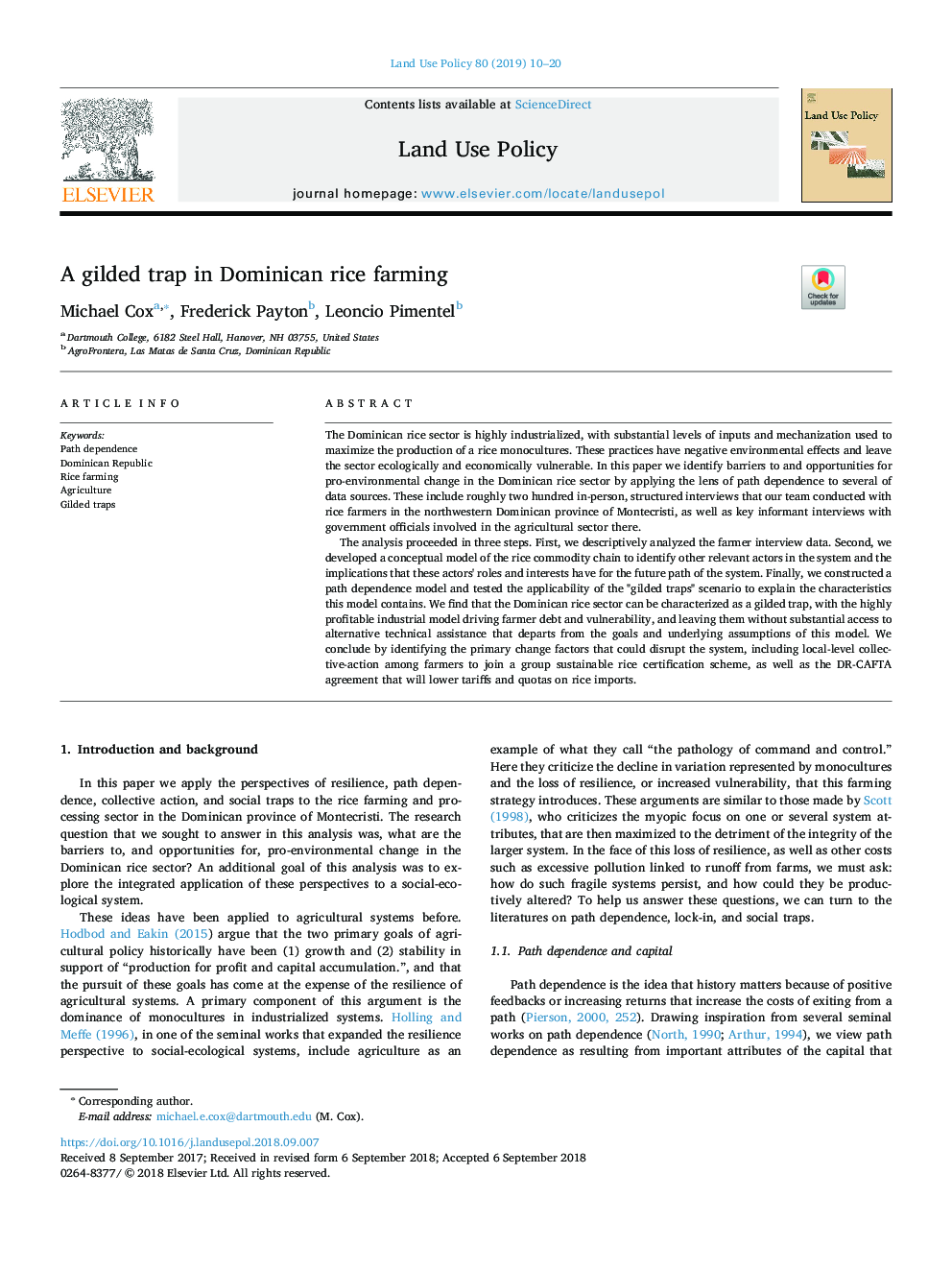| Article ID | Journal | Published Year | Pages | File Type |
|---|---|---|---|---|
| 11012795 | Land Use Policy | 2019 | 11 Pages |
Abstract
The analysis proceeded in three steps. First, we descriptively analyzed the farmer interview data. Second, we developed a conceptual model of the rice commodity chain to identify other relevant actors in the system and the implications that these actors' roles and interests have for the future path of the system. Finally, we constructed a path dependence model and tested the applicability of the "gilded traps" scenario to explain the characteristics this model contains. We find that the Dominican rice sector can be characterized as a gilded trap, with the highly profitable industrial model driving farmer debt and vulnerability, and leaving them without substantial access to alternative technical assistance that departs from the goals and underlying assumptions of this model. We conclude by identifying the primary change factors that could disrupt the system, including local-level collective-action among farmers to join a group sustainable rice certification scheme, as well as the DR-CAFTA agreement that will lower tariffs and quotas on rice imports.
Related Topics
Life Sciences
Agricultural and Biological Sciences
Forestry
Authors
Michael Cox, Frederick Payton, Leoncio Pimentel,
